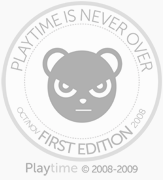The Nanojunkie Diaries

“What do you think an artist cares about?… Fine wines and black-tie affairs? No! He lives only for that narcotic moment of creative bliss. A moment that may come once a decade or never at all.” — Jimmy, Art School Confidential
I have a confession: I am a junkie. I have been addicted to National Novel Writing Month for the last five years, and my addiction shows no signs of abating.
Granted, it’s a pretty low-key addiction: a mere thirty days in November, cutting an obsessive swath into the holiday season. Those thirty days come in a densely packed rush, like an old friend who invades your home every Thanksgiving, eating up your free time, alienating your friends, irritating your significant other. Then, as soon as he’s settled in on the couch, he’s gone. You’re grateful to see him go — until next year, at least, when you grudgingly ask him back, wondering what’s the matter with you.
In case you haven’t heard of it: National Novel Writing month is a user-funded creative project started in 1999 by Chris Baty that encourages participants to write a 50,000 word novel in one month. (That’s approximately 1,666 words a day, if you’re the kind who obsessively tracks word count.) Collaborative fiction and works-in-progress are disallowed, but screenplays, nonfiction, and other kinds of creative work are encouraged. There is no “prize” for winning–save a little digital certificate and the smug satisfaction of churning out hundreds of pages of terrible writing when the guy next to you had the good sense to quit.
Nanowrimo’s website features “creative procrastination” forums, word count tools, interviews, and other ways to avoid writing. Baty has even written a book on Nanowrimo entitled No Plot? No Problem! in which he champions the scruffy charm of the mostly-improvised novel, urging hopeful authors to banish their “inner editor” and embrace their creativity.
Nanowrimo is not without its critics. Many see the project as a threat to legitimate novelists, fearing that the craft will be torn down by the burgeoning masses of participation culture. Some bristle at the cheek of Nanowrimo participants daring to call themselves writers, or even (gasp!) novelists, feeling that “true” novelists are threatened by such amateur endeavors. (This, to me, is as ludicrous as saying that gay marriage threatens heterosexual marriage.) None of this does much to daunt participation, however; Nanowrimo has grown every year since 1999, from its original participation of 21 members to over 100,000 in 2007, and many Nano authors have gone on to see their Nanowrimo books in print (although, with the new promotion from Creative Space, anyone can do that. God bless the Information Age.)
Pages: 1 2 3








Leave your response!